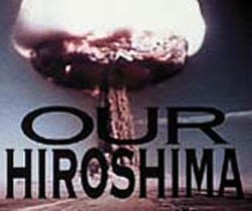
Our Hiroshima 1997
Distributed by Films Media Group, PO Box 2053, Princeton, New Jersey 08543-2053; 800-257-5126
Produced by Anton Wagner Productions Inc. in association with Vision TV
Directed by Anton Wagner
VHS, color, 43 min.
College - Adult
History
Date Entered: 11/09/2018
Reviewed by Carol Lelonek, Health Sciences Library, State University of New York at BuffaloOur Hiroshima is a film dealing with the dropping of the atomic bomb on Hiroshima. The film features Setsuko Nakamuro Thurlow who lived in Hiroshima and was 13 when the bomb hit. Her home was completely destroyed and she lost several family members. Her memory of the attack is very vivid and her descriptions heart-wrenching. Thurlow has since moved to Canada and her main focus today is to campaign for peace and the elimination of nuclear threat.
As the title intimates, the main focus is on Hiroshima and what effect the atomic bomb had on the people and the city. Actual archival film footage is used illustrating how Hiroshima was decimated along with film clips depicting piles of corpses and severely injured survivors. These clips are very graphic and somewhat horrifying to the average viewer yet necessary in order to gain a full understanding of the ramifications. The audio presentation is also graphic in nature when describing how survivors were treated and what types of injuries they incurred. For example, some were physically disfigured, while others lost their eyesight or their eyeballs were blown out of their skulls. Internally, some men were reduced to a zero sperm count while women were rendered infertile. These clips are in black and white and the audio and video are slightly distorted but acceptable.
Interestingly, Thurlow educates the viewer on the role Canada had in the creation of the atomic bomb. All the Uranium 235 used was discovered and mined in Canada and used in the Manhattan Project. Many Canadian scientists worked with their American counterparts as well. However, Thurlow is also quick to point out that Canada has not ever developed their own nuclear weapon and her campaigning and demonstrations are some of the reasons why.
The film slightly touches on the political history of the atomic bomb but does not delve deeply enough into why the decision to drop the bomb was made, however that decision has been a subject of debate for decades.
Due to the graphic nature of the film, the audience should be nothing less than a college-level or adult group. Institutions from Canada or those teaching Canadian History or World War II will also be of interest. This is a very good and educational film.